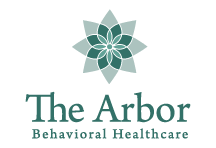“It’s not easy to find a mother who would look back fondly on the time her son had cancer,” admits Jeffrey Kluger, author of “Addiction by Doctor’s Prescription” for TIME Magazine. Although this sounds like something that would never happen, it does for Penny. Penny’s son battled cancer when he was 13. The pain that came from cancer treatment was otherworldly. There was help, though. A doctor prescribed OxyContin, an opioid, for the pain Penny’s son was dealing with. “The brain loves OxyContin – the way the drug lights up the limbic system, with cascading effects through the central striatum, midbrain, amygdala, orbitofrontal cortex and prefrontal cortex, leaving pure pleasure in its wake,” says Kluger. “What the brain loves, it learns to crave.” And crave the drug, Penny’s son’s brain did. “By the time Penny’s son was 17, his cancer was licked – but his taste for Oxy wasn’t.” When Penny’s son’s doctor stopped prescribing the opioid, he found the next available thing: heroin. If Penny and her son’s story sounds familiar, you are not alone. Arbor Behavioral Healthcare is here to help you and your family deal with addiction.
Penny and Her Son are not unique
So many people who are struggling and in pain receive prescriptions for opioids. “If someone is dying, addiction isn’t a problem,” says Jim Rathmell, a professor of anesthesia at Harvard Medical School. “But for prescribers, the distinction between a patient who has three or four weeks to live and one who’s 32 and has chronic back pain started to blur.” More and more people in the latter category are walking out of doctors’ offices with prescriptions for Schedule II drugs, those which carry a “severe” risk for dependency. Doctors must submit a written prescription for Schedule II drugs, whereas they can just call in a Schedule III drug, which carries a “moderate or low risk” of dependency. Penny and her son are a part of the growing group of families who have a loved one addicted to opioids. “By 2016, 1 in every 65 deaths in the U.S. was due to an opioid overdose, including 1 in 5 among young adults,” says Kluger. Use and misuse of opioids is a growing problem. Each death due to opioids is one death too many.
Arbor Behavioral Healthcare is trying to combat the opioid crisis. We are here to help you. Call us today at 844-413-2690. We want to speak with you and help you in your quest to recovery. Call us now.


